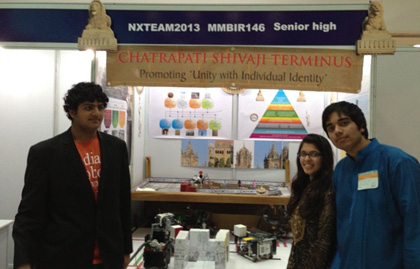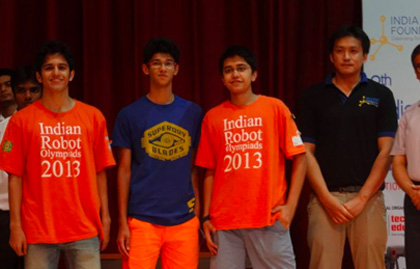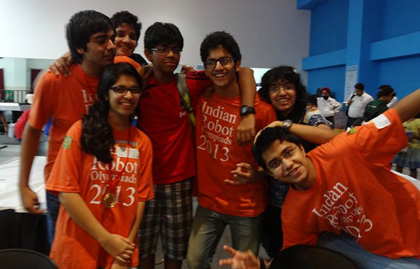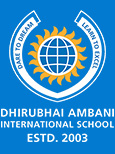DAIS Students at Indian Robot Olympiad (IRO) 2013
IRO attracts top notch science focus students from all over India to compete in this prestigious robotics design and programming competition. DAIS students made the school tremendously proud at the IRO 2013 this year. In participation with other school students and under the mentoring of Children’s Technology Workshop (in Mumbai), the DAIS students team’s won in all major competition categories. We are both proud and happy about their achievements and wish them luck in their further endeavours at World Robot Olympiad which will take place in Indonesia. Award winning teams with DAIS students participation were:
1. Hemani Kalucha and Aman More, NX Team, Open Category, 1st Position
2. Shaurya Khazanchi and Karan Dhabalia, Senior Maze, 3rd Position
3. Trisha Shetty and Aakarsh Gupta, RoboSoccer, 3rd Position
In fact one individual, was trained by DAIS itself. Hitansh Doshi with his team members, won the 3rd position in the Junior High Maze Category.
Open Category
In the open category, a team with DAIS and Ecole Mondiale School students won the first position. The team consisted of Hemani Kalucha and Aman More from DAIS and Arvind Ranganathan from Ecole Mondiale. They aced the open category theme of Promoting and Protecting a World Heritage Site. Their project was Promoting our own World Hertiage Site: Chhatrapati Shivaji Terminus in Mumbai.
Millions of commuters traverse this station ordinarily or use it as office space. Sadly, while the world knows it, the heritage and legacy of Chhratpati Shivaji Terminus (CST), located in the heart of Mumbai city, is unknown to Mumbaikars themselves. This remarkable 125 years old Neo-Gothic revival architecture style structure strikes you in all its magnificence when you enter it. This building was designed by Sir F.W. Stevens, who amalgamated, the Indo-Saracenic, the Muslim and Gothic Architectures to create a completely new architectural style to represent India’s Unity in Diversity.
Their project, “MasterSmythe - The Robot Architect” - decoded F.W. Stevens feat by emulating the complex interplay of physics and motion engineering in building construction. After months of brainstorming and hard work, the team designed a unique concept for promoting CST. The robotics design consisted of a number of robots working together, representing the different cultures that came together to build this marvellous structure.

Hemani Kalucha and Aman More (on the right)
Senior Maze
The senior maze category team placed first in the State level round of the Indian Robot Olympiad, and third in the Nationals round. It consisted of Shaurya Khazanchi and Karan Dhabalia from DAIS, and Mihir Shah from Bombay Scottish School.
The maze competition at IRO is a test of robot design, elegance, speed, and mechanics to beat a challenging maze. The maze required the robot to go on a specific path collecting only red coloured balls and successfully bringing them back to the base. This year the maze category competition attracted 30+ Indian level teams showing tremendous diversity in design and ideas of how to achieve the assigned task. The DAIS team’s robot finished the maze in 14 seconds that earned them 3rd Position.

RoboSoccer
Robosoccer, also termed as Gen II football, was quite a unique category and as its name suggests, it demanded robots to replicate the game of football. The team, Lego United, comprised of Aakarsh Gupta, Raghav Ringshia and Trisha Shetty, successfully came 3rd place at nationals.
The robots designed by the team clearly seemed to have mastered the art of dribbling the infrared football. The shooter and goalie combination strategy proved to be benefical. Through the use of Infrared and compass sensors, the shooter showed amazing skills at dribbling the football through the divided colored zones of the soccer board. The use of light sensors contributed immensely to determining the bots’ positions.
What began as a humble attempt, required around four months of guresome hardwork and patience to develop and deliver the top level robot performance. Like the real game, every minute of preparation time was devoted to testing new strategies and building upon the ideas of the previous year’s designs.


